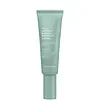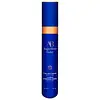What's inside
What's inside
 Key Ingredients
Key Ingredients

 Benefits
Benefits

 Concerns
Concerns

No concerns
 Ingredients Side-by-side
Ingredients Side-by-side

Water
Skin ConditioningGlycerin
HumectantCaprylic/Capric Triglyceride
MaskingLactobacillus Ferment
Skin ConditioningAcrylamide/Sodium Acryloyldimethyltaurate Copolymer
Emulsion StabilisingAlbizia Julibrissin Bark Extract
MaskingCalophyllum Inophyllum Seed Oil
AntimicrobialNiacinamide
SmoothingOctadecenedioic Acid
EmulsifyingRosa Canina Seed Oil
EmollientSimmondsia Chinensis Seed Oil
EmollientSqualane
EmollientRibose
HumectantCentella Asiatica Leaf Extract
Skin ConditioningGlycyrrhiza Glabra Root Extract
BleachingSaccharomyces/Xylinum/Black Tea Ferment
Skin ConditioningMel
EmollientZinc PCA
HumectantCamellia Sinensis Leaf Extract
AntimicrobialCaffeine
Skin ConditioningAllantoin
Skin ConditioningSuperoxide Dismutase
AntioxidantPlantago Lanceolata Leaf Extract
AntimicrobialMoringa Oleifera Seed Extract
Skin ConditioningCentella Asiatica Meristem Cell Culture
AntioxidantSyringa Vulgaris Leaf Cell Culture Extract
Skin ConditioningPalmitoyl Tripeptide-8
Skin ConditioningPhospholipids
Skin ConditioningSodium Hyaluronate
HumectantMarrubium Vulgare Meristem Cell Culture
Skin ProtectingHydrolyzed Jojoba Esters
Skin ConditioningGlutamylamidoethyl Imidazole
Bisabolol
MaskingCeramide NP
Skin ConditioningHyaluronic Acid
HumectantSphingolipids
EmollientTocopherol
AntioxidantRosmarinyl Glucoside
AntioxidantCaffeyl Glucoside
AntioxidantGallyl Glucoside
AntioxidantTetrahydrodiferuloylmethane
AntioxidantTetrahydrodemethoxydiferuloylmethane
AntioxidantTetrahydrobisdemethoxydiferuloylmethane
AntioxidantMaltodextrin
AbsorbentDextran
Hydroxyethylcellulose
Emulsion StabilisingCetearyl Olivate
Sorbitan Olivate
EmulsifyingXanthan Gum
EmulsifyingIsosorbide Dicaprylate
Skin ConditioningWater, Glycerin, Caprylic/Capric Triglyceride, Lactobacillus Ferment, Acrylamide/Sodium Acryloyldimethyltaurate Copolymer, Albizia Julibrissin Bark Extract, Calophyllum Inophyllum Seed Oil, Niacinamide, Octadecenedioic Acid, Rosa Canina Seed Oil, Simmondsia Chinensis Seed Oil, Squalane, Ribose, Centella Asiatica Leaf Extract, Glycyrrhiza Glabra Root Extract, Saccharomyces/Xylinum/Black Tea Ferment, Mel, Zinc PCA, Camellia Sinensis Leaf Extract, Caffeine, Allantoin, Superoxide Dismutase, Plantago Lanceolata Leaf Extract, Moringa Oleifera Seed Extract, Centella Asiatica Meristem Cell Culture, Syringa Vulgaris Leaf Cell Culture Extract, Palmitoyl Tripeptide-8, Phospholipids, Sodium Hyaluronate, Marrubium Vulgare Meristem Cell Culture, Hydrolyzed Jojoba Esters, Glutamylamidoethyl Imidazole, Bisabolol, Ceramide NP, Hyaluronic Acid, Sphingolipids, Tocopherol, Rosmarinyl Glucoside, Caffeyl Glucoside, Gallyl Glucoside, Tetrahydrodiferuloylmethane, Tetrahydrodemethoxydiferuloylmethane, Tetrahydrobisdemethoxydiferuloylmethane, Maltodextrin, Dextran, Hydroxyethylcellulose, Cetearyl Olivate, Sorbitan Olivate, Xanthan Gum, Isosorbide Dicaprylate
Water
Skin ConditioningGlycerin
HumectantMaris Aqua
HumectantSodium Acrylates Copolymer
1,2-Hexanediol
Skin ConditioningCellulose
AbsorbentMicrocrystalline Cellulose
AbsorbentPropanediol
SolventGlyceryl Glucoside
HumectantEthylhexyl Polyhydroxystearate
EmollientOryza Sativa Bran Oil
EmollientSqualane
EmollientLecithin
EmollientSodium Phytate
Citric Acid
BufferingSodium Hyaluronate
HumectantO-Cymen-5-Ol
AntimicrobialHydrolyzed Rice Protein
Skin ConditioningMaltodextrin
AbsorbentSodium Citrate
BufferingSodium Hydroxide
BufferingHydrolyzed Adansonia Digitata Extract
EmollientPorphyridium Cruentum Extract
Skin ConditioningPhragmites Communis Extract
Skin ConditioningPoria Cocos Extract
Skin ConditioningBackhousia Citriodora Leaf Extract
AstringentSodium Benzoate
MaskingAloe Barbadensis Leaf Juice Powder
Skin ConditioningCamellia Sinensis Leaf Extract
AntimicrobialHydrogenated Lecithin
EmulsifyingTocopheryl Acetate
AntioxidantXanthan Gum
EmulsifyingAlanyl Glutamine
HumectantArginine
MaskingOligopeptide-177
Phenylalanine
MaskingPotassium Sorbate
PreservativeSisymbrium Irio Seed Oil
MaskingSodium Chloride
MaskingEpigallocatechin Gallatyl Glucoside
AntioxidantWater, Glycerin, Maris Aqua, Sodium Acrylates Copolymer, 1,2-Hexanediol, Cellulose, Microcrystalline Cellulose, Propanediol, Glyceryl Glucoside, Ethylhexyl Polyhydroxystearate, Oryza Sativa Bran Oil, Squalane, Lecithin, Sodium Phytate, Citric Acid, Sodium Hyaluronate, O-Cymen-5-Ol, Hydrolyzed Rice Protein, Maltodextrin, Sodium Citrate, Sodium Hydroxide, Hydrolyzed Adansonia Digitata Extract, Porphyridium Cruentum Extract, Phragmites Communis Extract, Poria Cocos Extract, Backhousia Citriodora Leaf Extract, Sodium Benzoate, Aloe Barbadensis Leaf Juice Powder, Camellia Sinensis Leaf Extract, Hydrogenated Lecithin, Tocopheryl Acetate, Xanthan Gum, Alanyl Glutamine, Arginine, Oligopeptide-177, Phenylalanine, Potassium Sorbate, Sisymbrium Irio Seed Oil, Sodium Chloride, Epigallocatechin Gallatyl Glucoside
Ingredients Explained
These ingredients are found in both products.
Ingredients higher up in an ingredient list are typically present in a larger amount.
Camellia Sinensis Leaf Extract is derived from the leaves of the tea plant. Black tea, green tea, and oolong tea are all harvested from this plant.
This ingredient has many skin benefits:
This ingredient contains polyphenols, a strong antioxidant. Antioxidants help fight off molecules that damage skin cells.
On top of that, the antioxidants in green tea neutralize free-radicals from the sun. This gives the skin some extra UV protection, but should not replace sunscreen.
Many components of tea have anti-inflammatory properties.
Polyphenols and L-theanine help soothe the skin and reduce irritation. The caffeine in Camellia Sinensis Leaf Extract helps calm inflamed blood vessels.
Other compounds found in tea include: Vitamin Bs, linoleic acid, magnesium, calcium, iron, and zinc.
Research has shown both drinking Camellia Sinensis Leaf Tea and applying it to the skin can help boost skin elasticity and hydration. Studies also show using tea extract may reduce sebum, or oil, production.
Learn more about Camellia Sinensis Leaf ExtractGlycerin is already naturally found in your skin. It helps moisturize and protect your skin.
A study from 2016 found glycerin to be more effective as a humectant than AHAs and hyaluronic acid.
As a humectant, it helps the skin stay hydrated by pulling moisture to your skin. The low molecular weight of glycerin allows it to pull moisture into the deeper layers of your skin.
Hydrated skin improves your skin barrier; Your skin barrier helps protect against irritants and bacteria.
Glycerin has also been found to have antimicrobial and antiviral properties. Due to these properties, glycerin is often used in wound and burn treatments.
In cosmetics, glycerin is usually derived from plants such as soybean or palm. However, it can also be sourced from animals, such as tallow or animal fat.
This ingredient is organic, colorless, odorless, and non-toxic.
Glycerin is the name for this ingredient in American English. British English uses Glycerol/Glycerine.
Learn more about GlycerinMaltodextrin is a polysaccharide. It is derived from starch such as rice, corn, wheat, or potato starch.
In food, Maltodextrin is used to improve the texture and thicken a product. Due to its structure, it can help create a gel texture. As an emulsion stabilizer, it helps keep the ingredients in a product together.
As a polysaccharide, Maltodextrin has moisturizing properties. Polysaccharides are a type of carbohydrate. The top layer of skin uses polysaccharides to retain water, keeping the skin hydrated.
Maltodextrin is water soluble and has a sweet taste.
Learn more about MaltodextrinSodium Hyaluronate is hyaluronic acid's salt form. It is commonly derived from the sodium salt of hyaluronic acid.
Like hyaluronic acid, it is great at holding water and acts as a humectant. This makes it a great skin hydrating ingredient.
Sodium Hyaluronate is naturally occurring in our bodies and is mostly found in eye fluid and joints.
These are some other common types of Hyaluronic Acid:
Learn more about Sodium HyaluronateSqualane is an emollient that helps the skin hold onto moisture. It's an oily liquid that occurs naturally in certain types of fish and plant oils.
Because squalane boosts hydration in the skin, it also comes with plenty of benefits: it is an antioxidant and can help fight free radicals and skin damage. Squalane is also found to have a detoxifying effect when applied.
Squalane comes from squalene, which occurs naturally within the sebum of our skin. It is one of the oils our skin produces to keep itself hydrated. Squalane is the hydrogenated version of squalene and has a longer shelf life.
Research shows that squalane is non-irritating (even at 100% concentration).
In general, it's a fantastic ingredient. It does a great job at hydrating the skin, and it's suitable for those with sensitive skin.
The source of squalane may impact malassezia / fungal acne. This is because olive oil derived squalane can contain impurities such as fatty acids and plant waxes. Sugarcane derived squalane is recommended for anyone with malassezia concerns.
Is squalane vegan?
This depends on the source. Squalane can be derived from both plants and animals. Most squalane used in skincare comes from plants.
Please note: the source of squalane is only known if disclosed by the brand. We recommend reaching out to the brand if you have any questions about their squalane.
Read more about squalene with an "e".
Is squalane an oil?
Squalane is often called an oil, but it’s technically not; it’s a hydrocarbon, meaning it’s only made of carbon and hydrogen, unlike true oils which are triglycerides made of fatty acids and glycerol.
The term “oil-free” isn’t regulated, so companies can define it however they want. Some exclude all oils, while others just avoid mineral oil or comedogenic oils.
While some people avoid oils thinking they cause breakouts, the right kind of oil (or oil-like ingredient like squalane) can actually help balance and hydrate your skin. It’s worth testing out simple oils or squalane to see what works best for your skin.
Learn more about SqualaneWater. It's the most common cosmetic ingredient of all. You'll usually see it at the top of ingredient lists, meaning that it makes up the largest part of the product.
So why is it so popular? Water most often acts as a solvent - this means that it helps dissolve other ingredients into the formulation.
You'll also recognize water as that liquid we all need to stay alive. If you see this, drink a glass of water. Stay hydrated!
Learn more about WaterXanthan gum is used as a stabilizer and thickener within cosmetic products. It helps give products a sticky, thick feeling - preventing them from being too runny.
On the technical side of things, xanthan gum is a polysaccharide - a combination consisting of multiple sugar molecules bonded together.
Xanthan gum is a pretty common and great ingredient. It is a natural, non-toxic, non-irritating ingredient that is also commonly used in food products.
Learn more about Xanthan Gum